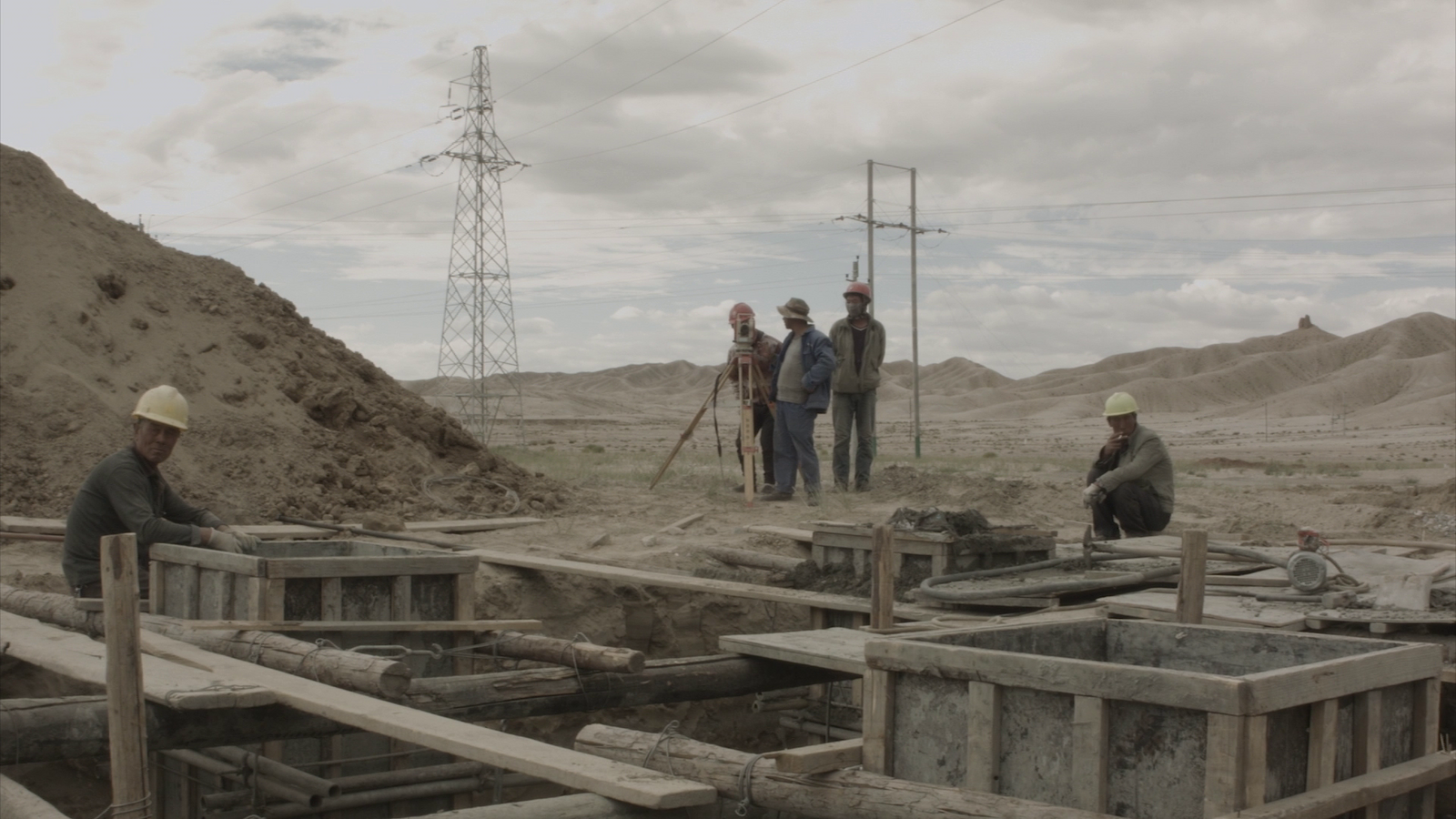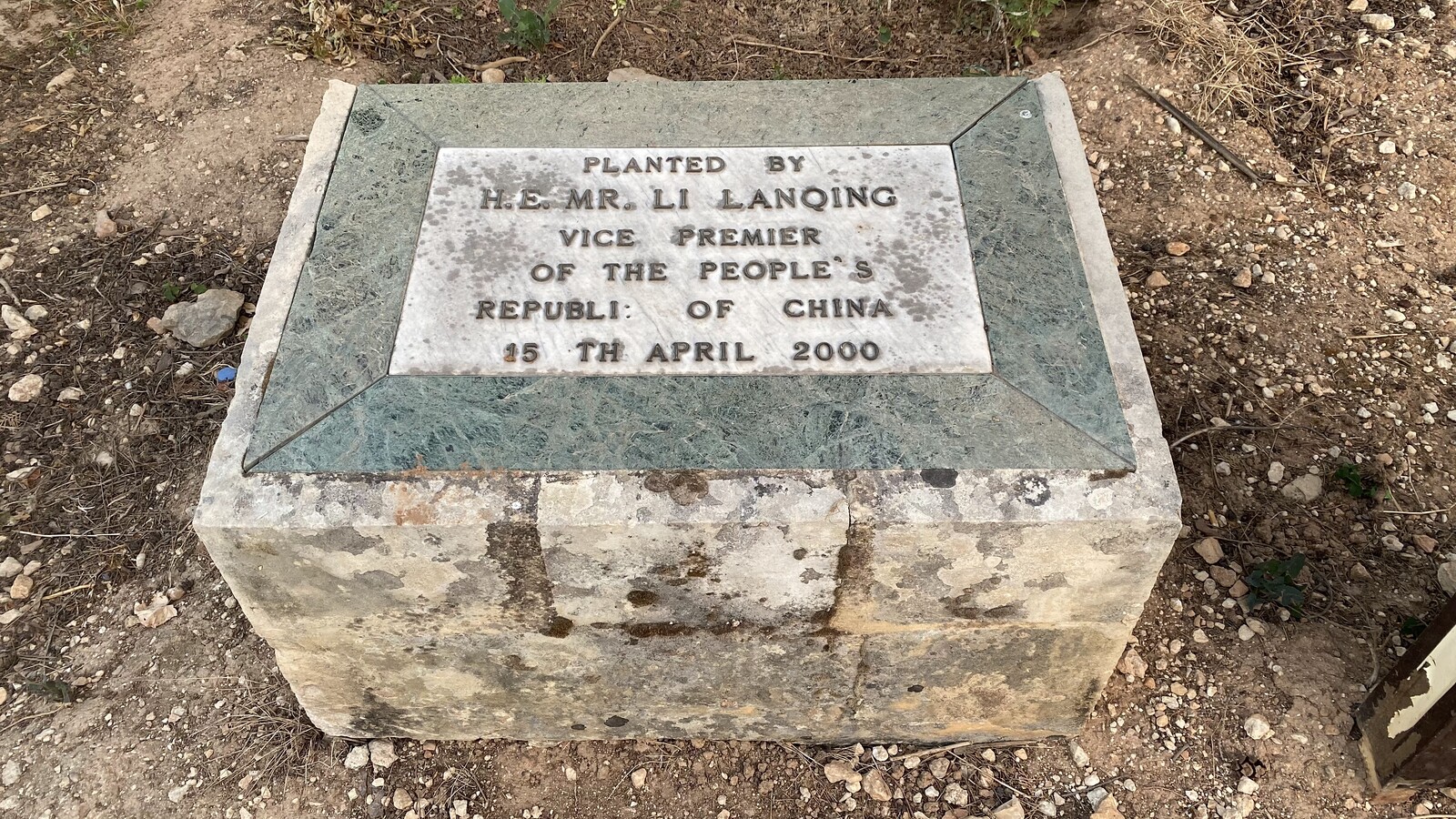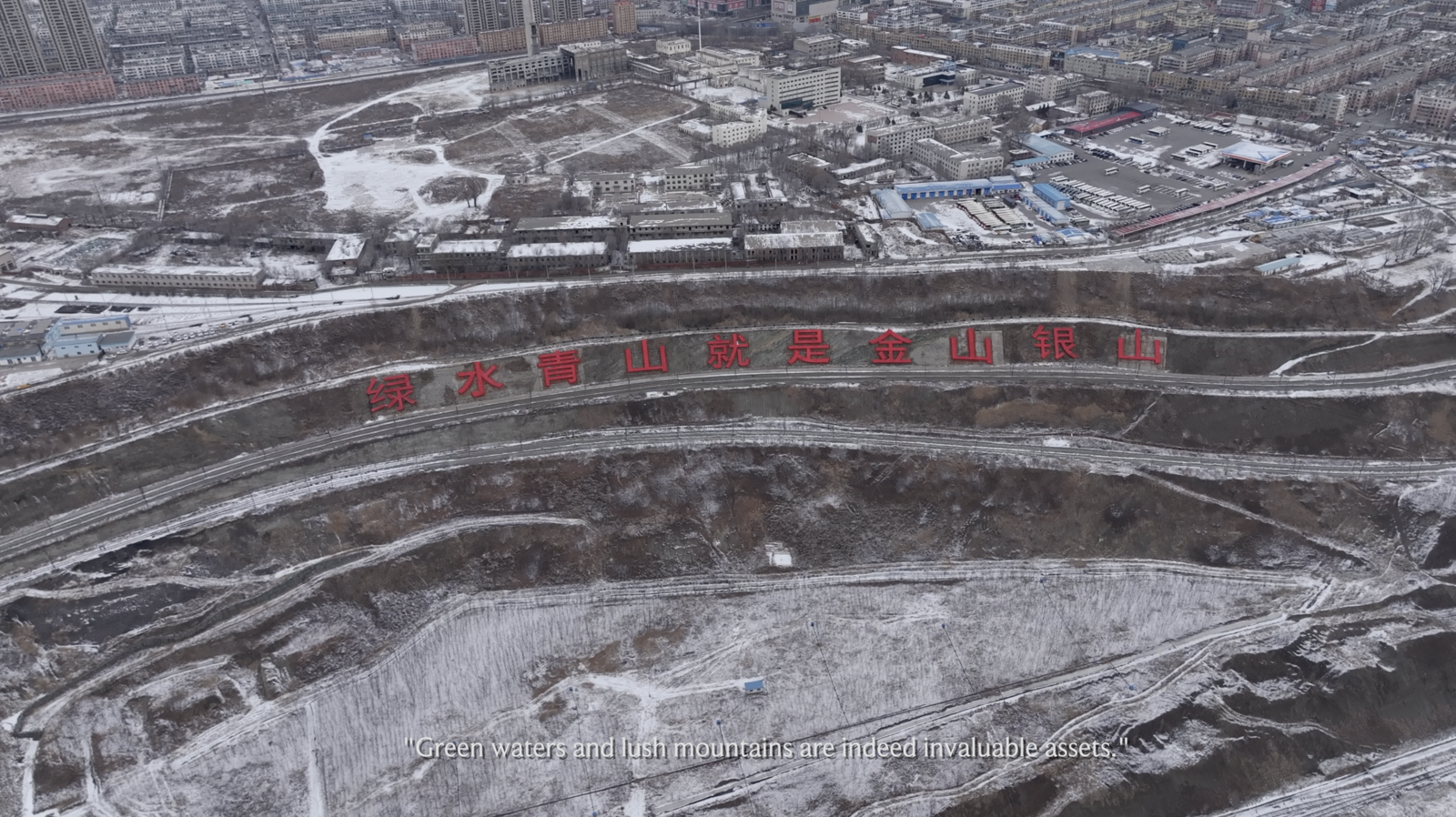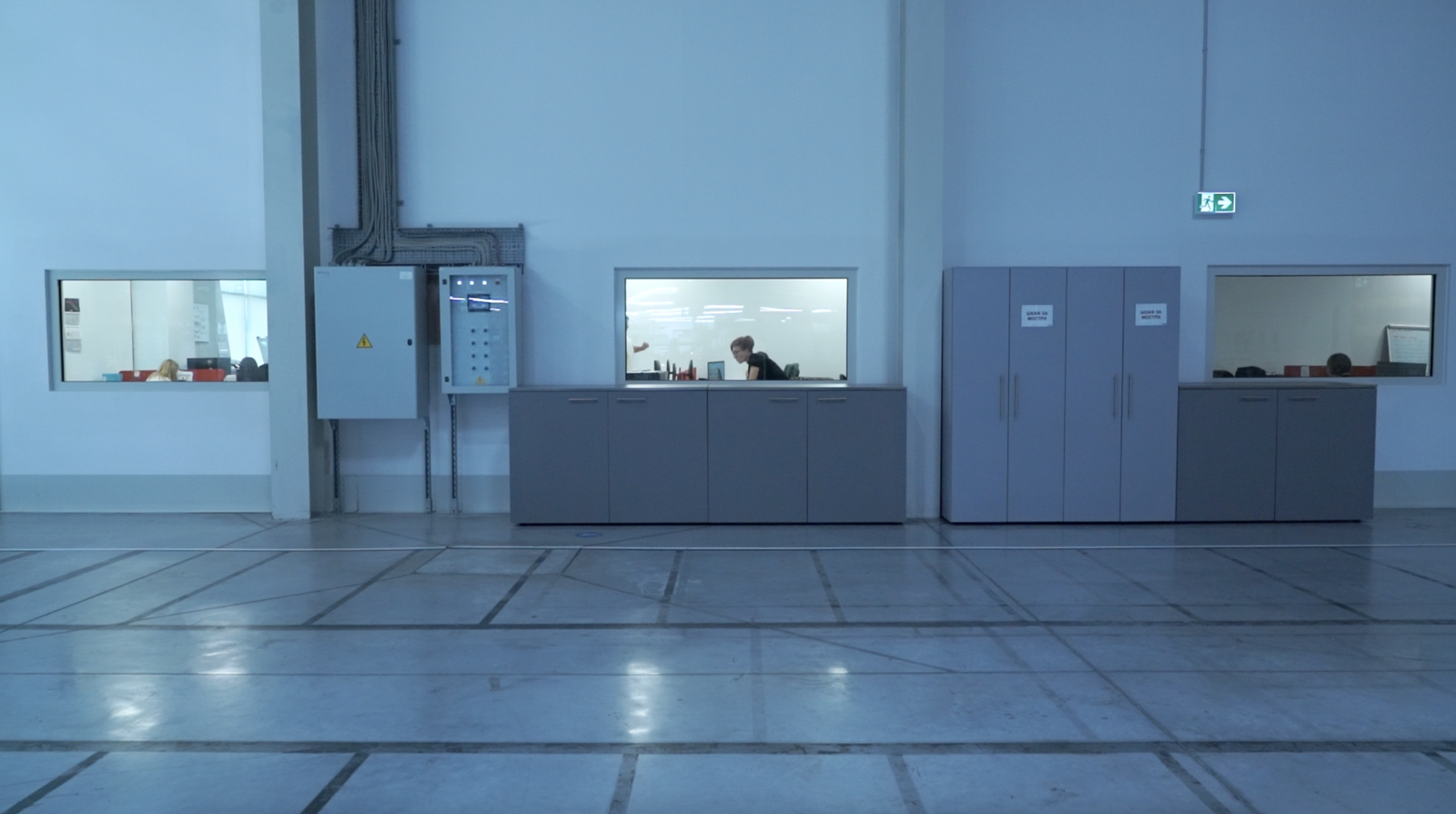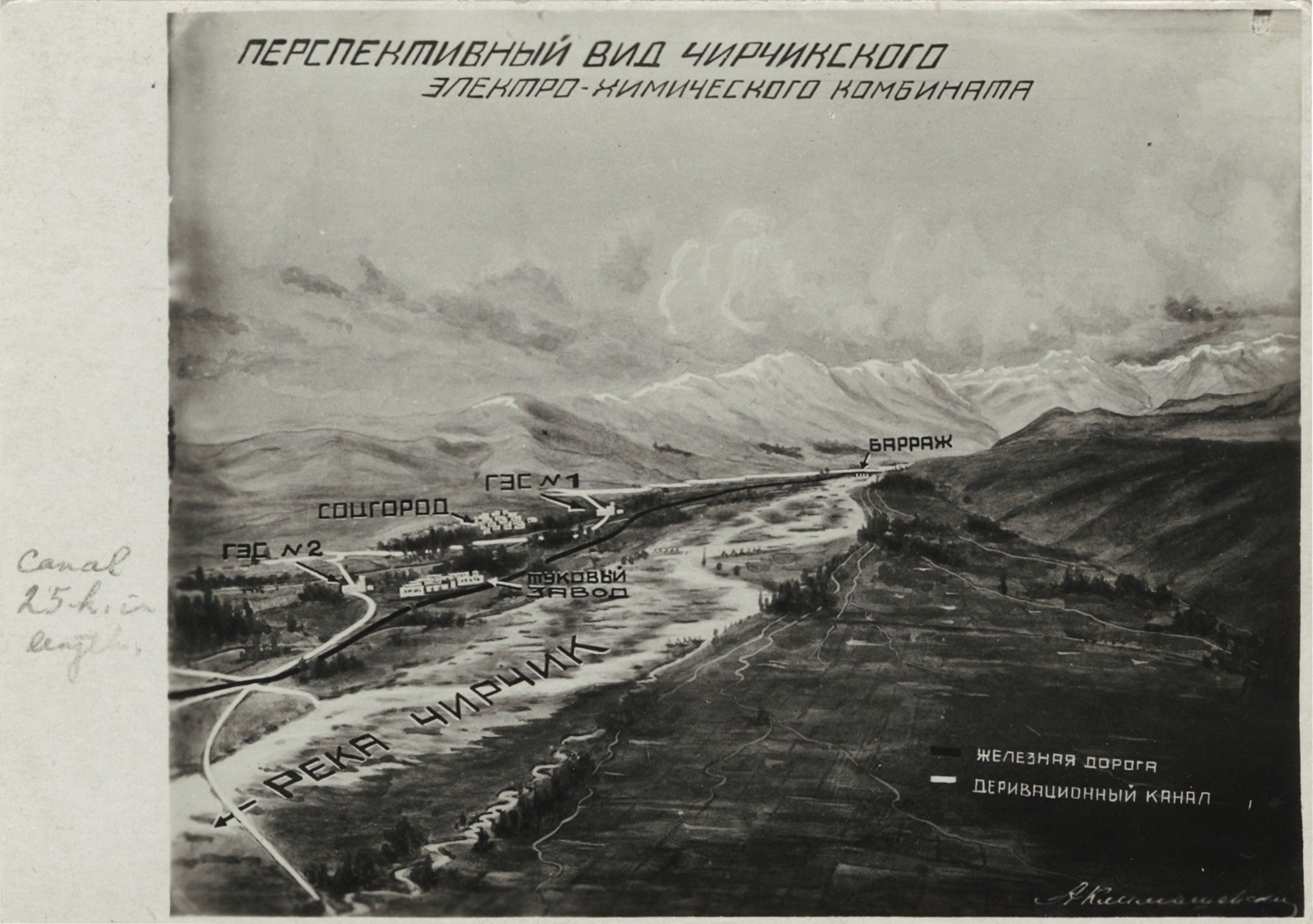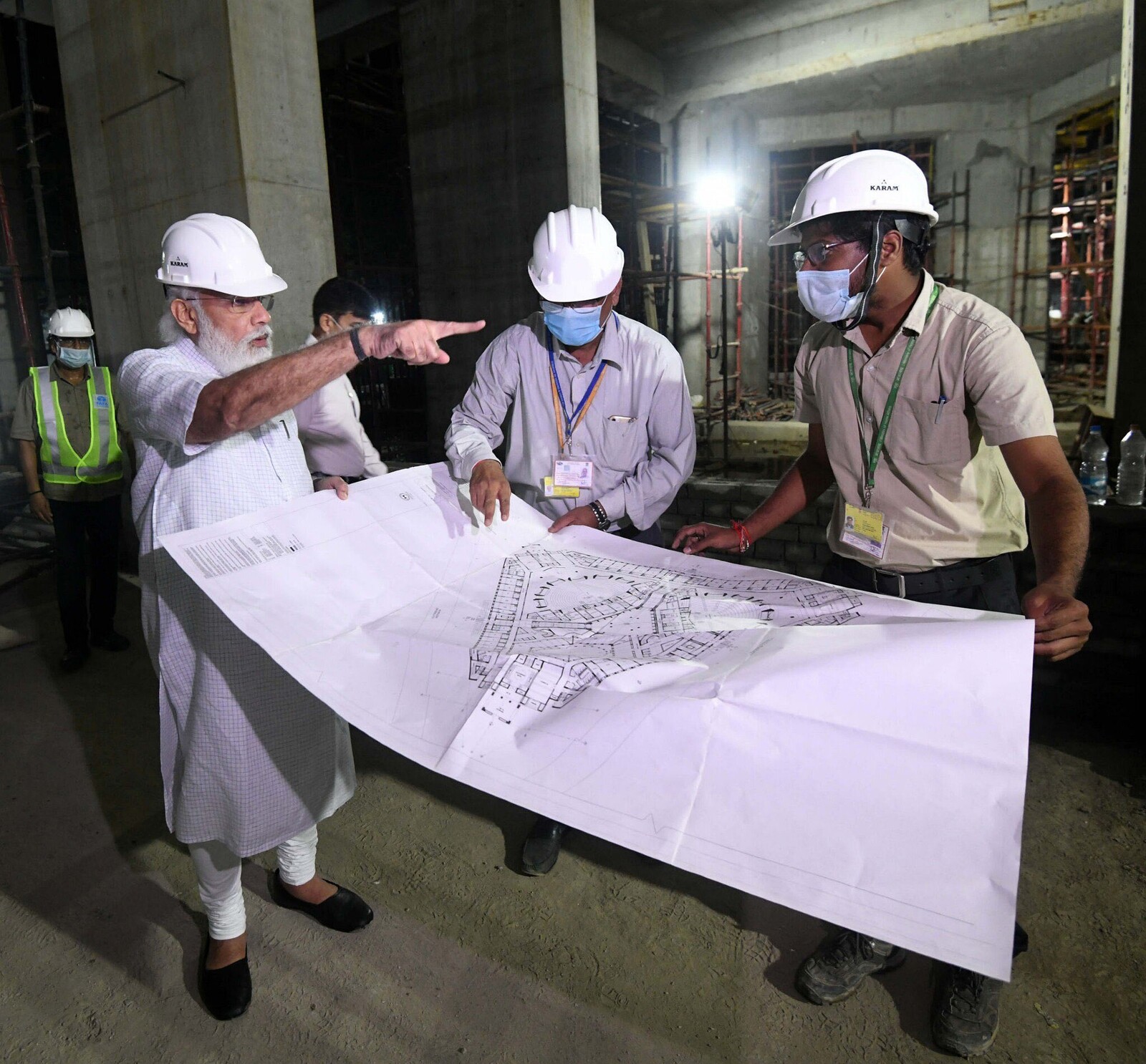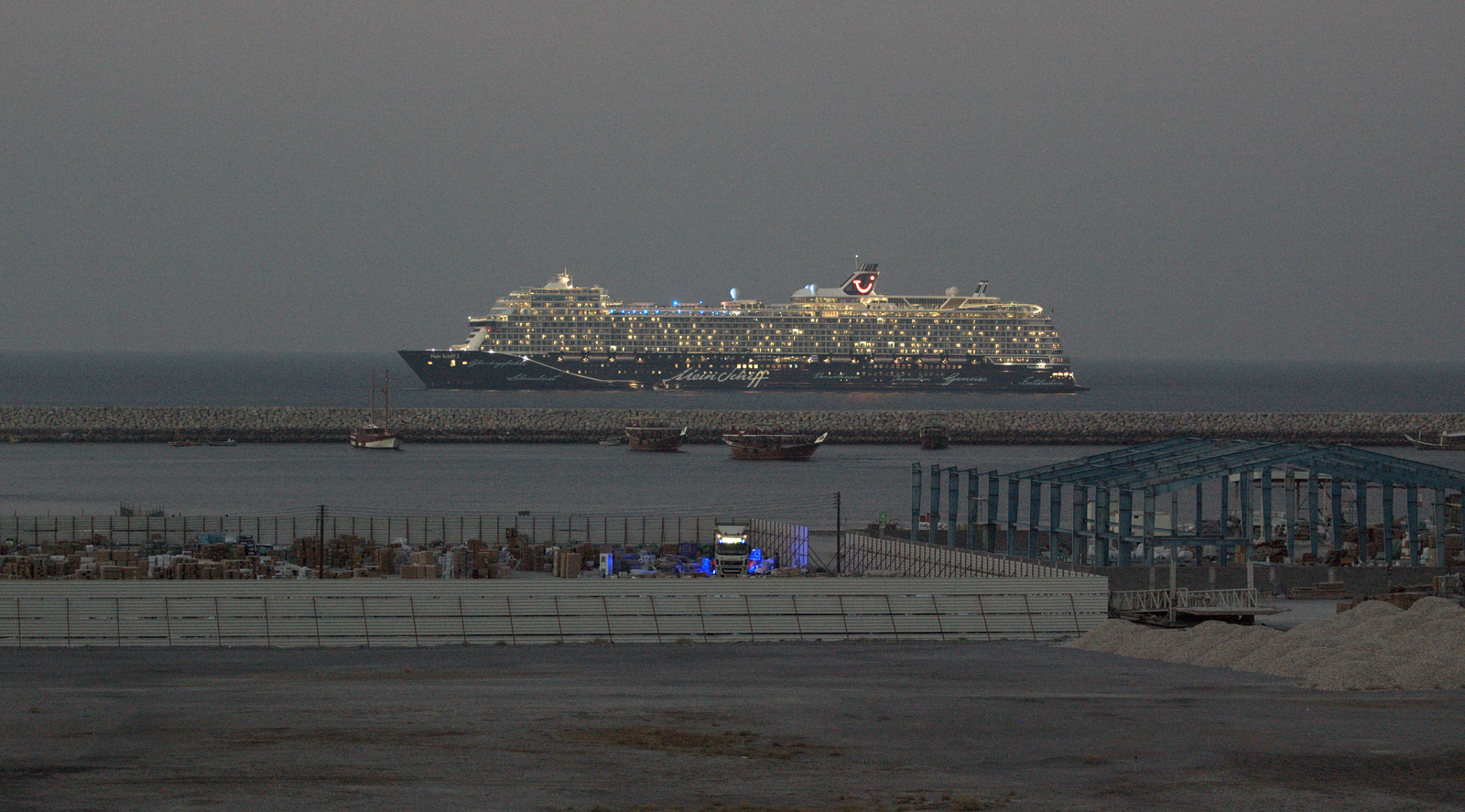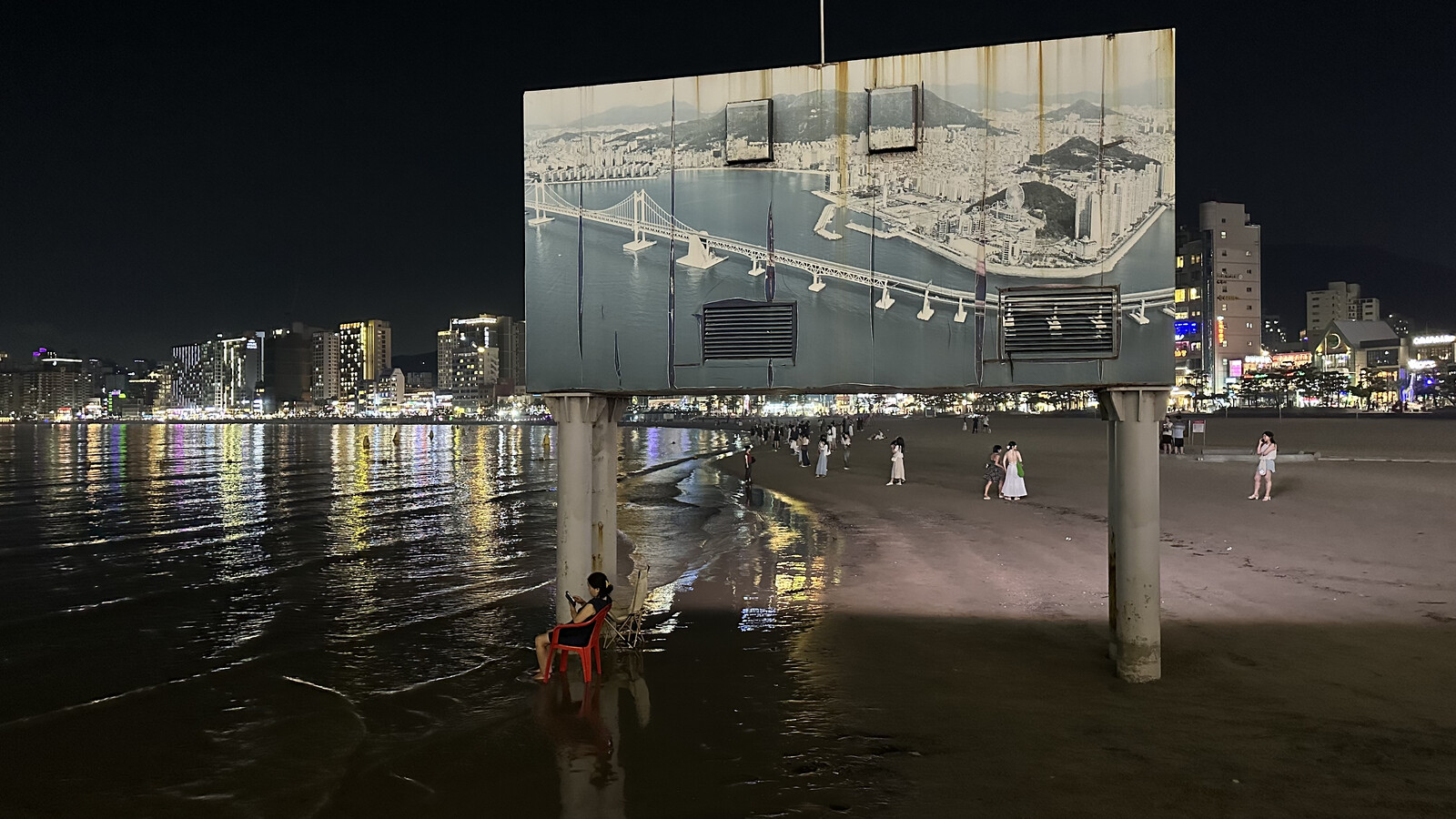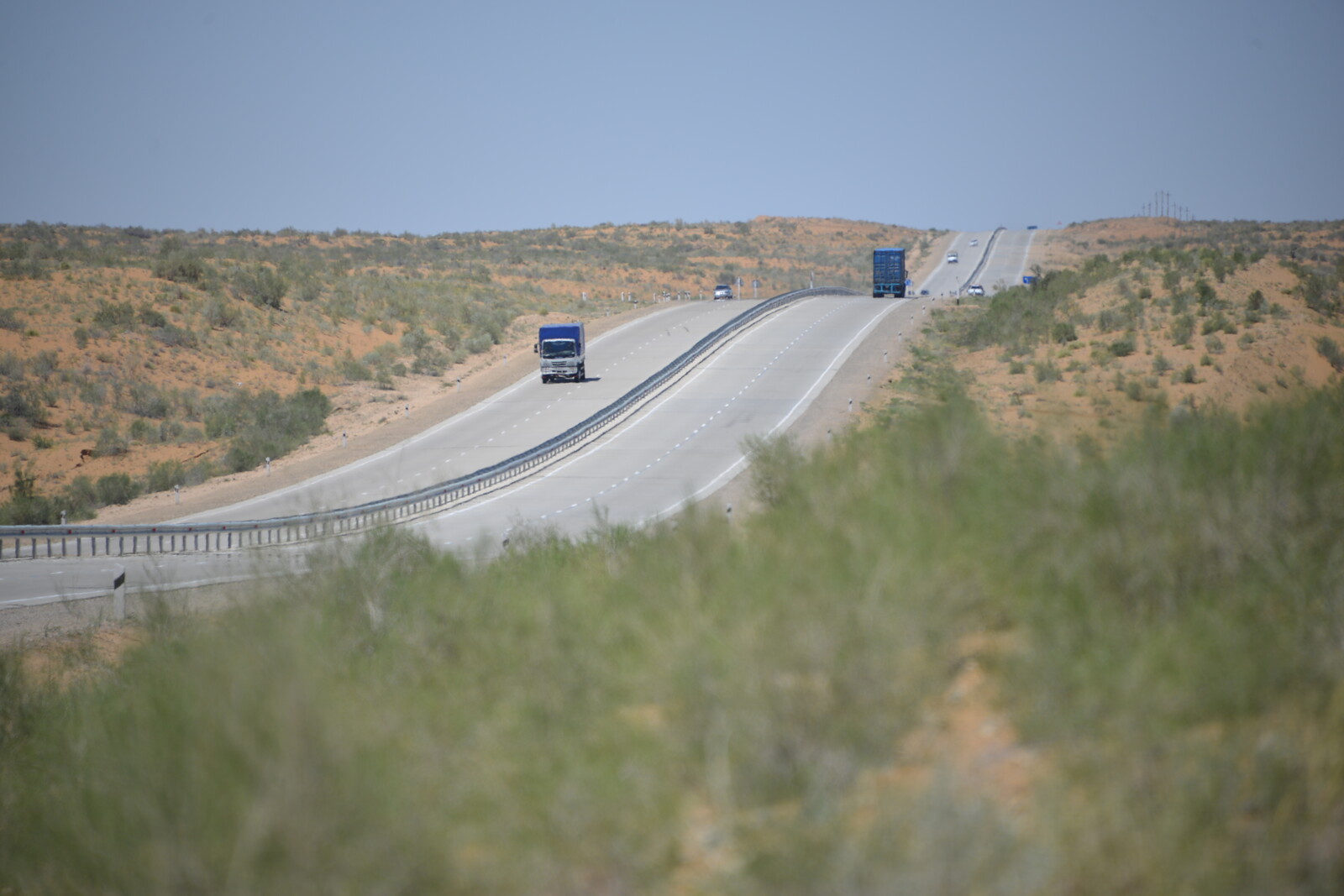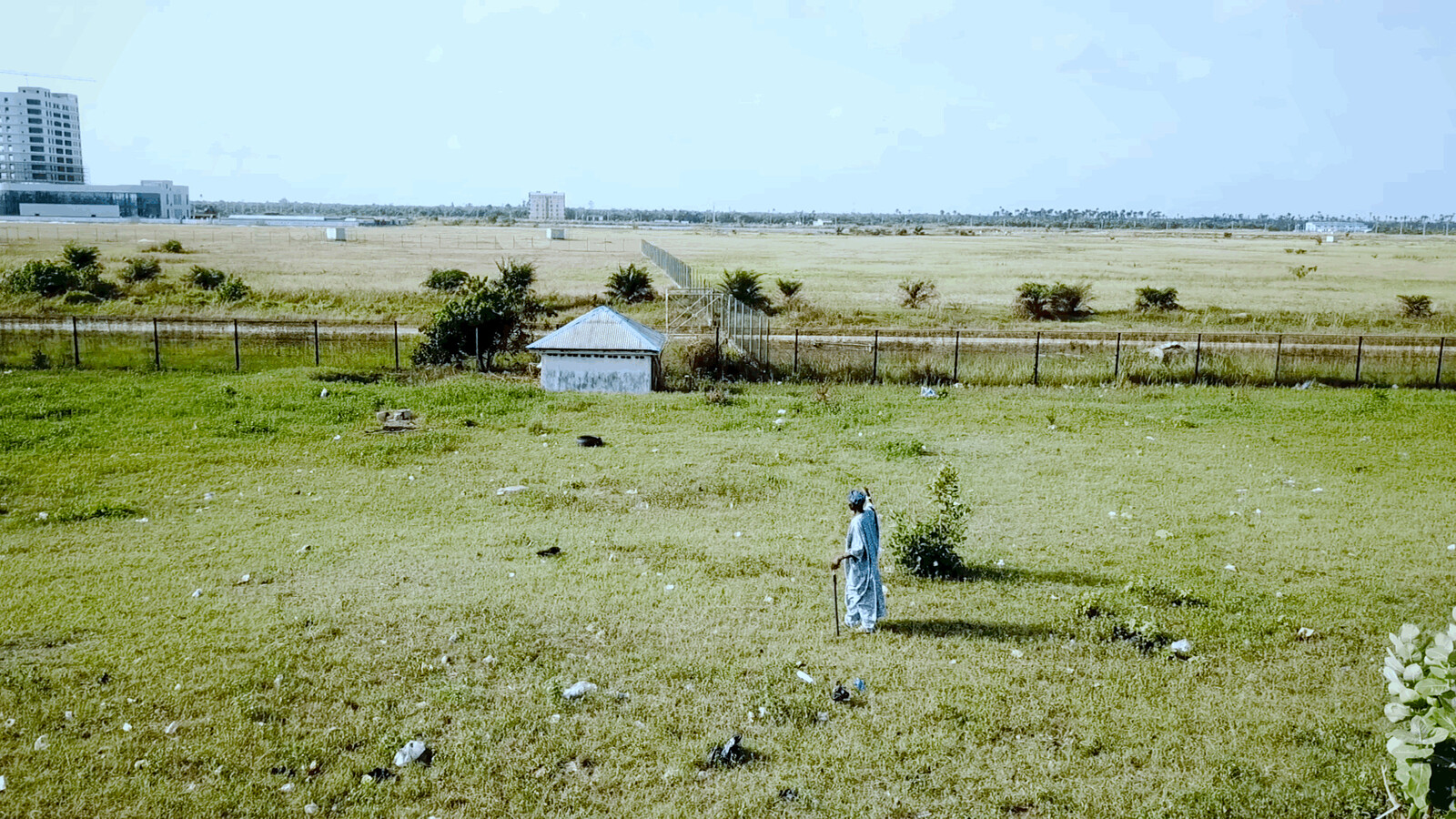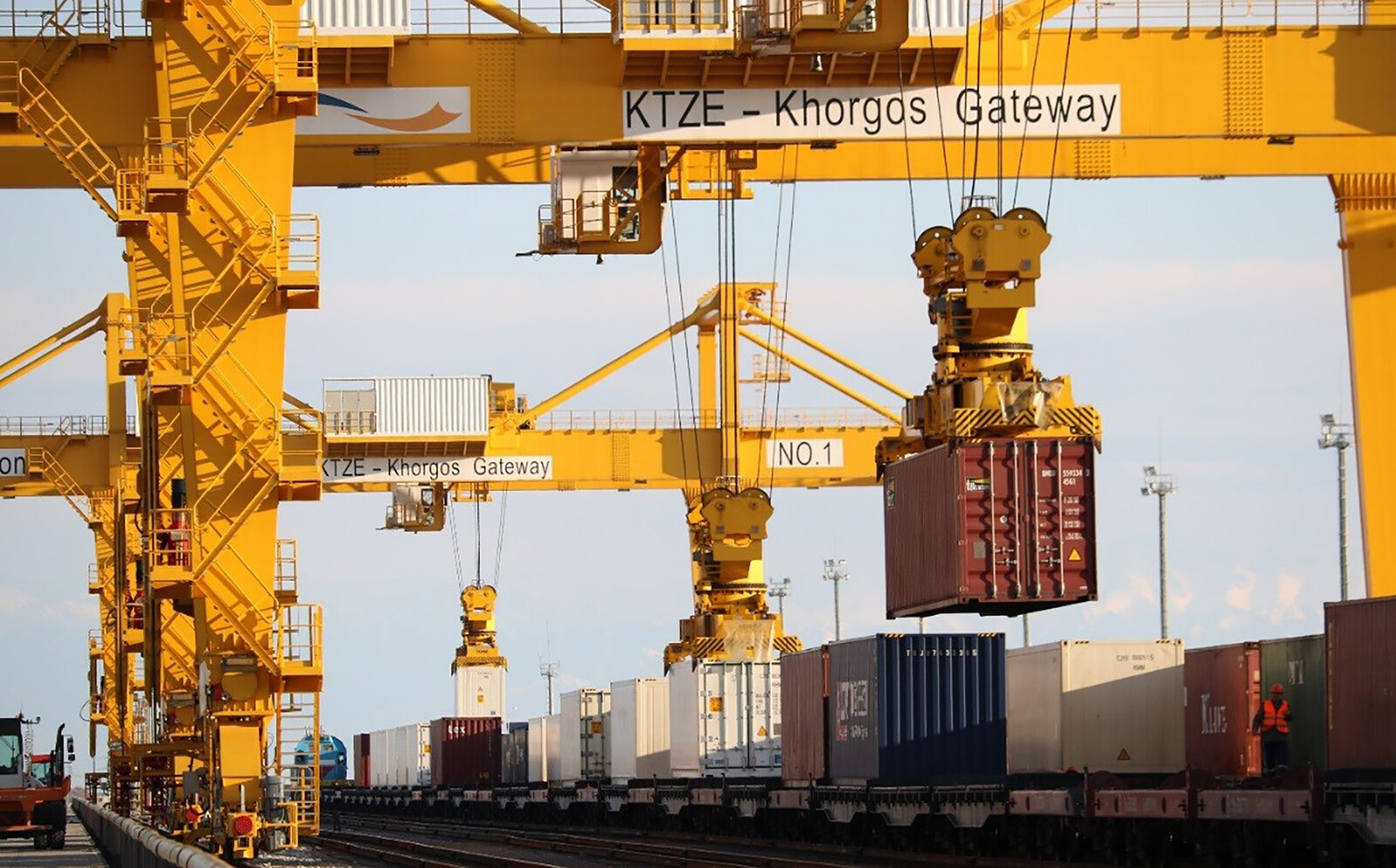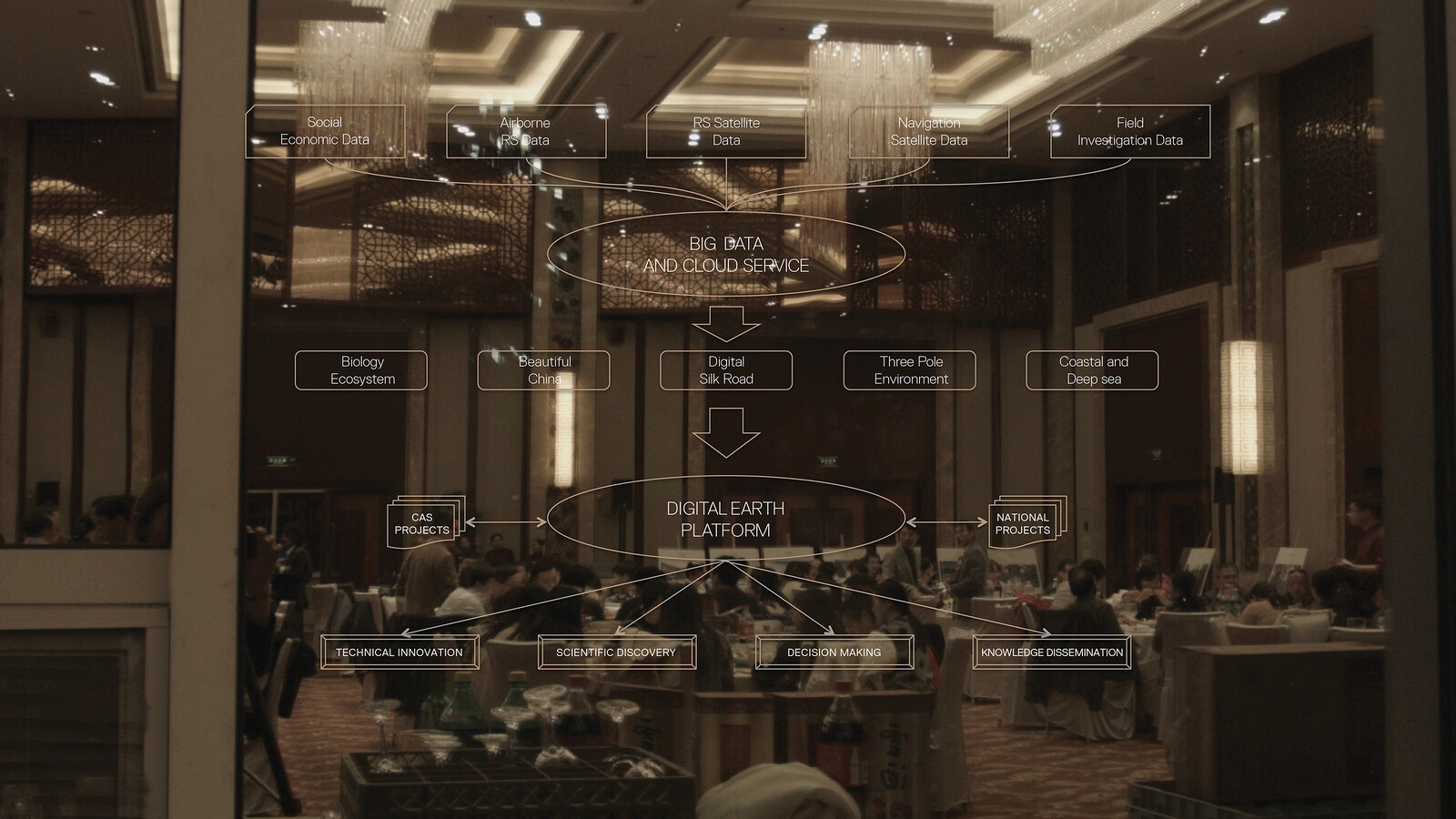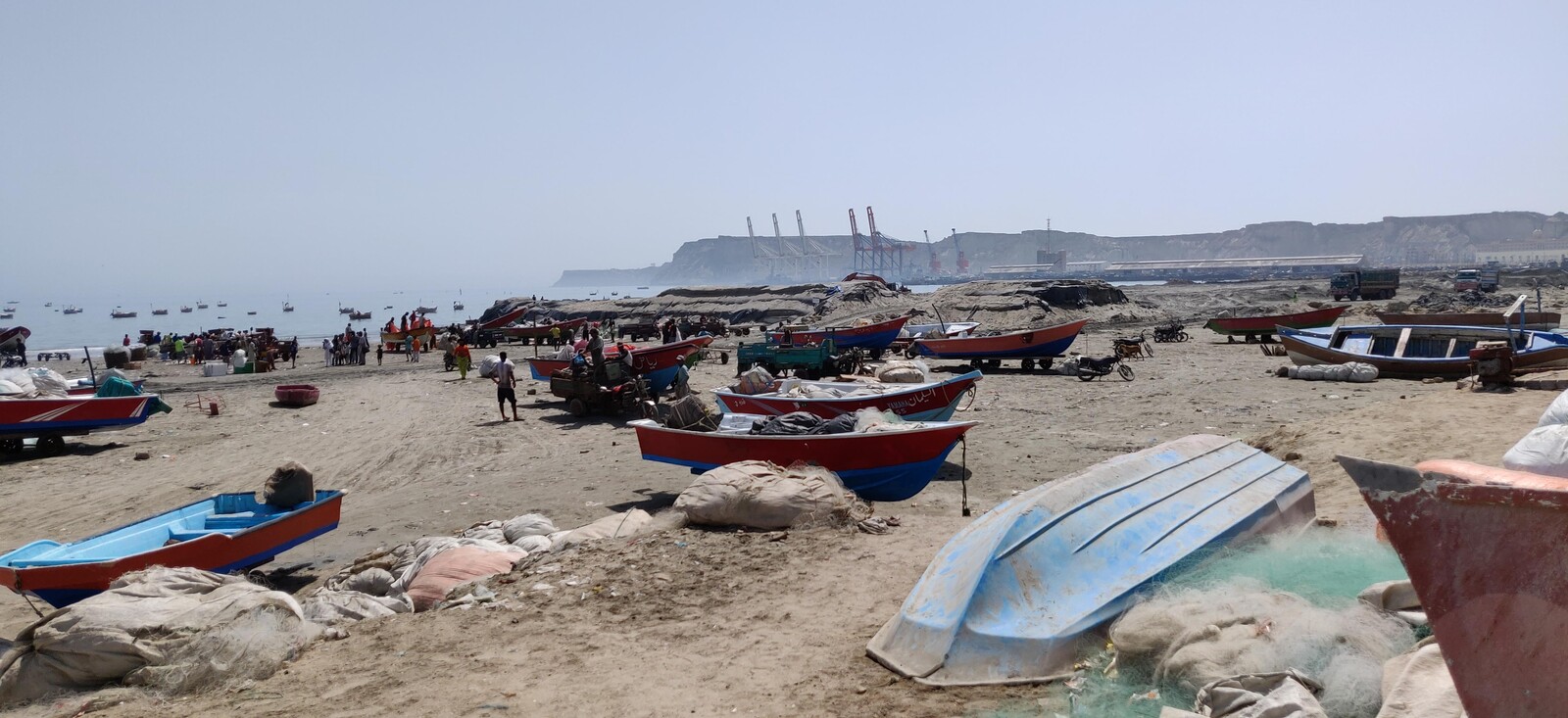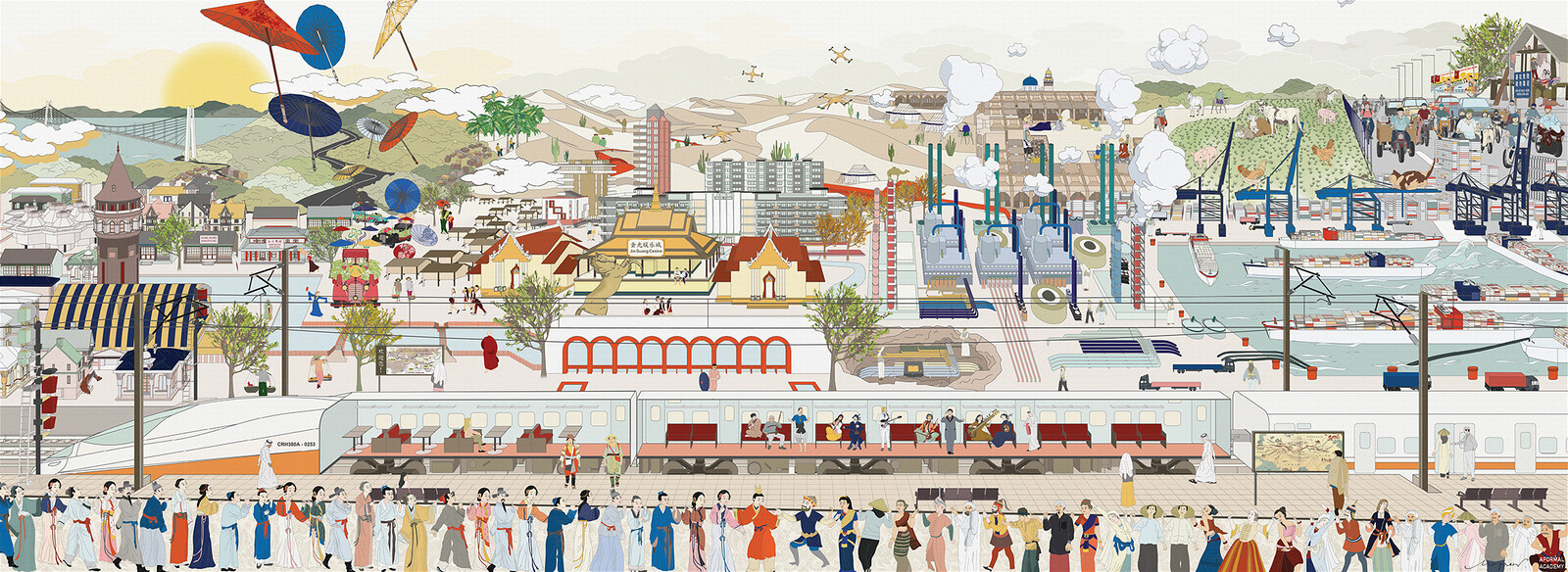The standard way of writing about infrastructure is to start from the question of space and treat time as a consequence. Infrastructures create channels and connections that link separate points, facilitating movement between them. China’s Belt and Road Initiative exemplifies this association between infrastructure and the command of distance. Its promoters emphasize the interlinking of continents and the interconnection of oceans. Yet this focus on infrastructures as a mode of conquering space obscures what is often most important in building them.
From a common sense perspective, increased control over time comes as a consequence of the conquest of space. Roads and railways, canals and ports, transmission lines and communication networks all appear to offer the benefit of faster connections. They promise to improve the rate of flow. Food supplies, workers, electrical power, crude petroleum, news reports, surveillance, and armed force all depend on purpose-built networks to overcome distance. Each physical improvement and spatial extension of the network can reduce the time it takes to convey a given quantity of the material the line carries.
The claim of faster connections and improved rates of flow supports most economic arguments for the building of infrastructure. A World Bank study of the Belt and Road Initiative estimates the benefits that the new infrastructure will produce by considering only the increasing speed at which products will move from one country to another. The report echoes an old but newly popular argument among economists, that large investments in infrastructure reduce the time it takes to move goods, producing an improvement that is measured as development. From this perspective, colonialism can be shown to have improved the life of the colonized. The railways British investors built across colonial India, for example, reduced the time and thus the cost of shipping agricultural products—allowing landowners to increase the price of the main market crops.1 The conquest of time is presented as the key benefit brought by such large infrastructure projects. Time and space are linked, so the conquest or compression of the first is naturally associated with the second.
But what if large infrastructure projects have another relationship to time? What if they are built not to speed things up, but to introduce a delay? What if the virtue of infrastructure is not the acceleration of time, but the ability to place the future further away?
Any improvement in connections brings the possibility of increased delay. This can be an unplanned consequence. Examples of this are well known. Opening or improving a route creates its own demand. Traffic that might have moved using other modes switches to the new route, while movements that enjoyed a local circulation take advantage of wider connections. In both cases, the delays that the new infrastructure had promised to reduce can instead be exacerbated.
However, another kind of delay is often the very purpose of an infrastructure project. While the building of infrastructure may be justified by a need to move people or supplies, their main purpose is often to provide vehicles for another kind of movement: the flow of finance. The promoters of the great transcontinental railways of the nineteenth-century United States advertised the importance of the lines for shipping grain, cattle, and people, but their value was often as a means to construct financial networks. A main purpose of the railways, as Richard Wright puts it, was to move paper.2
Large infrastructure projects move investment paper, in the form of bonds, bank loans, and share certificates. They are built not to transport these financial instruments across space, but to provide the means to create them and carry them through time.
The relationship of these financial goods to time is different from that of the other materials that infrastructures carry. Investment acquires its value not from the speed that brings things closer together, but from the delay that pushes things into the future. A financial instrument can increase in value thanks to the passage of time. An infrastructure project is a device for stretching forward the passage of time. It is an apparatus for the creation of a delay.
Infrastructure has shaped our conceptions of space and time, and of materiality and money, impeding us from thinking differently. We tend to think of infrastructure in terms of speed rather than postponement, in terms of the quickening of flows rather than the delay, largely because the building of a rail line, port, road system, or utility network allows the separation of the avowed purpose from its cost. Proposals and plans for such projects typically present the material purpose first, and the monetary arrangement second. One part seems material, tangible, and visible, the other financial, intangible, and difficult to visualize. One is the end, the other merely the means.
This distinction between material and financial, visible and intangible, is partly an effect of infrastructure. In practice, each aspect of an infrastructure project is a mixture of both. The goods carried by a shipping line or the energy moved by a utility network are made up of various inputs, quality controls, prices, and labor costs, just as the investment instruments that a project brings into being depend on the mechanisms that produce such “paper.”3 Whether printed as stock certificates or generated in computer networks, financial instruments involve systems of registration, auction, and enforcement. While both goods and finance are hybrids of matter and value, of the tangible and the intangible, infrastructures appear to separate them, conjuring a world that seems divided into material goods versus money, the real versus the financial, the end versus the means.
In effecting this divided world, infrastructure projects also give it a hierarchy. The promoters of new projects justify them to the public by material needs, not financial opportunities. The movements and supplies that will flow faster thanks to new infrastructure are presented as a requirement to be met, a necessity for life, a condition of wellbeing, an improvement, or, as economists call it, development. Finance—the only element that exists in order to grow, the one factor whose very possibility lies in growth—appears as something secondary. Capital seems to arrive after the fact, to enable needs to be met. In creating the effect of a world divided into the real and the financial, infrastructure projects establish the apparent primacy of the real or the material, of physical needs and human wants, and place finance as the servant, the subservient element existing only to help meet such needs.
Let us reverse this order of priority and put the question of finance first. Capital wants delay. Postponement brings capital into being and allows it to multiply. The delay, the ability to push something into the future yet continue to control it, can be understood as the very origin of money.4
By convention, economists usually describe money as means to facilitate exchange, or to store value. While it can serve these purposes, most money comes into being as credit. Credit is an accounting practice through which promised future revenues are made accessible in the present. If the creditor can use that promise to settle other debts, then the credit account operates as money.5 The more reliable the apparatus for promising and capturing future revenue, and the further the mechanism can be extended into the future, the greater the opportunity for the creation of credit money.
If the construction of an apparatus to capture revenue that lies in the future creates the possibility of money, it also gives money its peculiar ability of appearing to “grow.” This appearance comes about because of two features that define the making of the future: it is subject to delay, and its course is not certain.
Due to postponement and the element of uncertainty, claims to future revenue are usually acquired at a reduced price. For example, the claim to a revenue of $100 that will be available a year from now might be purchased in the present at a 10% discount, or for the price of $90. The discount can be compounded each year that the revenue is postponed, multiplying its effect. The claim to a revenue of $100 in seven years’ time might be purchased in the present, at the same discount rate, for about $50. Provided the apparatus of postponement is reliable and the degree of uncertainty can be managed, the sum of $50 can appear to double in size, through no effort on the part of the investor, or even of the funds themselves. (The funds do not represent the cost of the apparatus, but rather the discounted purchase price of future revenues.) The mechanism of delay thus allows the creation of credit money, and endows it with its curious capacity to grow.
Most investors, and the wider public to which they belong, come to think of this transformation of $50 into $100 as the power of money to “earn interest.” The concept of interest makes the increase appear as a natural property of money, diverting attention from the infrastructural work that must be done to build a reliable apparatus of postponement and credit creation.
Historically, the practice of calculating the difference between the value of a future revenue and its cost in the present was known as “discounting,” a term still used today in the world of finance. What today appears as the “growth” of an investment can more usefully be seen, as the term discounting suggests, as the “reduction” of the future. Revenue can be extracted from the future at a fraction of its value. But this depends on building a mechanism that makes that future available. The ability of a certain quantity of money to apparently double its size does not depend on any power of the physical expansion of money. Instead, it is a consequence of an arrangement that creates an interruption and a shrinkage. What we call money is, in many instances, this kind of arrangement for building the reliable postponement and discounting of revenue.
In earlier centuries, the infrastructure of delay was not built of iron and steel or concrete. Its most common form was the crop cycle, in which the promise of next year’s harvest constituted the future for which credit could be created. Larger opportunities arose with the development of long-distance trade, especially once it could be monopolized through the building of powerful sailing ships and military trading posts. Before the age of railways, the most complex and expensive apparatus for generating and discounting future revenue was the sailing ship. The well-armed ocean-going vessels of the Dutch East India Company and other charted trading companies created the most profitable “delay” in revenue, through the time-lag of colonial trade.
Such profiting through financial discounting of the future had its limits. Delays were generally measured in months, not years or decades, so were limited in their possibility for “growth.” Prior to the emergence of modern, large-scale infrastructure, there was little value to a claim to revenue that lay far in the future. With the exception of real estate, or the state itself, there was no apparatus for generating revenue that was reliable enough that it might be profitably delayed and discounted over several years.
From the later nineteenth century, much more durable apparatuses for capturing the future could be built. Most of these took the form of infrastructure projects, typified by the building of railways. Such large, long-term construction projects offered new opportunities for the creation of credit. Banks and investment funds organized the credit, part of which funded the cost of constructing the apparatus, but most of which represented the new ability to capture revenue from the future and sell it at a discount in the present.
These infrastructure projects brought into being, alongside modern banking, another institution for the production of credit via the discounting of future earnings: the modern shareholder corporation. Over the following 150 years, the corporation became perhaps the most effective arrangement for organizing the accumulation and concentration of wealth.6 It was the building of railways, especially the transcontinental and other long-distance, colonial lines of the later nineteenth century, that gave rise to this new way of organizing capital. Shares of railway companies were the most common investment traded on the expanding stock exchanges of London, New York, and other financial centers. Previously, shares represented simply the part-ownership of the current assets of a business. In the new age of large infrastructure, shares were transformed into ownership claims on the revenues that infrastructures placed reliably into the future.7
Those with surplus funds could purchase a share of the future revenue—from the developers of a railway line, for example—at a discount. The developers would realize an immediate profit, in fact often a great windfall, since the future revenues might be worth many times the cost of building the infrastructure. And the share-buying investor would acquire the future revenue, discounted to reflect the fact that the revenue would not be available for five, ten, or fifty years.8
Two features of new infrastructure projects contribute to making this lengthened interruption of time possible. First, compared to other means of capturing revenue, infrastructures are unusually durable. Railways, dams, ports, pipelines, highways, and shipping canals are built with concrete, iron and steel, stonework, and other resilient materials. Their technical resilience and durability are partly what renders such arrangements as “infrastructure.” By design they must be more resilient than the transient goods, vehicles, liquids, and persons whose flow they channel and enable. While the materials carried by infrastructures are often designed to be consumed within months, days, or less, creating little in the way of long-term revenue streams, the life of infrastructure is typically measured in years or decades. The future revenue that can be purchased at a discount is in part the product of this necessary difference between the decomposability of supplies intended to be consumed and the non-decomposing quality of the apparatus through which they flow.
Second, more than many other means of capturing revenues, infrastructures are typically built with another kind of durability, a form of political and legal guarantee. As a shorthand, they can be described as monopolies. But that term simplifies the different elements of the guarantee. As an apparatus for the ordering and control of flows, an infrastructure tends to be fixed in place, a form of real estate even (in some uses, infrastructure becomes the label for almost any material structure larger than a building).9 Like all real property, in contrast to moveable goods, the structure is monopolizing, occupying space exclusively, blocking other users from that space, or charging them for its use. Even digital infrastructures monopolize space, not only figuratively, but also by occupying key geographical locations or by maintaining privileged access to electricity supplies and other requirements.10
Moreover, as large, materially extended arrangements, the building of infrastructure very often involves government power. Dams, ports, highways, power stations, and rail lines typically require a concession or authorization from an authority, awarding exclusive control of a river channel, harbor, transportation corridor, or communication node. This is not simply a question of governments awarding monopoly rights. The very powers of government, in the era of the modern state, emerged through the development of legal systems, legislative committees, municipalities, and other authorities that claimed powers to build or license infrastructure. Infrastructure and government co-evolved as parallel forms of spatially-defined power.11
As a result of their technical resilience and their forms of institutional and political support, infrastructures acquire a built-in durability. It is this durability that makes them an apparatus of delay: a means of constructing a durable future revenue, whose delayed acquisition enables infrastructure to become a vast machine of capital-creation.
Infrastructures work on time, but not only in the ways we commonly assume. While they may increase the speed at which goods are transported, people travel, or energy flows, this acceleration of time is not their most important attribute. Their physical scale, technical durability, and political strength give them another purpose. They introduce an interruption, a gap, out of which the present extracts wealth from the future.
World Bank, Belt and Road Economics: Opportunities and Risks of Transport Corridors (Washington, DC: The World Bank, 2019), ➝. See also Dave Donaldson, “Railroads of the Raj: Estimating the Impact of Transportation Infrastructure,” American Economic Review 108, no. 4–5 (2018): 899–934.
Richard Wright, Railroaded: The Transcontinentals and the Making of Modern America (New York: Norton, 2011).
See, for example, Canay Özden-Schilling, “Economy Electric,” Cultural Anthropology 30, no. 4 (2015): 578–588.
On capital as the capitalization of future revenue streams, see Jonathan Nitzan and Shimshon Bichler, Capital as Power: A Study of Order and Creorder (New York and London: Routledge, 2009). See also Fabian Muniesa et al., Capitalization: A Cultural Guide (Paris: Presses des Mines, 2017).
On money as an accounting system based on transferable credit, see Felix Martin, Money: The Unauthorized Biography (New York: Knopf, 2014), 27. On the history of credit money, see also David Graeber, Debt: The First 5,000 Years (New York: Melville House, 2011).
An earlier form of shareholding, the colonial trading monopoly, can be seen as a precursor of the modern joint-stock company. But that older, seaborne financial infrastructure changed in a different direction, giving rise to the modern colonial state. See, for example, Philip J. Stern, The Company-State: Corporate Sovereignty and the Early Modern Foundations of the British Empire in India (Oxford: Oxford University Press, 2011).
Paddy Ireland, “Efficiency or Power? The Rise of the Shareholder-oriented Joint Stock Corporation,” Indiana Journal of Global Legal Studies 25, no. 1 (2018): 291-330.
Infrastructure projects have now become an asset class. See Nicholas Hildyard, Licensed Larceny: Infrastructure, Financial Extraction and the Global South (Manchester: Manchester University Press, 2016).
Jesse McCormick suggested this point to me.
See Donald MacKenzie, “Just How Fast?” London Review of Books 41, no. 5 (March 2019): 23-24.
For a survey of current scholarship on the politics of infrastructure, see Brian Larkin, “The Politics and Poetics of Infrastructure,” Annual Review of Anthropology 42 (2013): 327-343. For more recent examples, see Stephen J. Collier, James Christopher Mizes, and Antina von Schnitzler, eds., Limn 7: Public Infrastructures/Infrastructural Publics (July 2016).
New Silk Roads is a project by e-flux Architecture in collaboration with the Critical Media Lab at the Basel Academy of Art and Design FHNW and Noema Magazine (2024), and Aformal Academy with the support of Design Trust and Digital Earth (2020).
